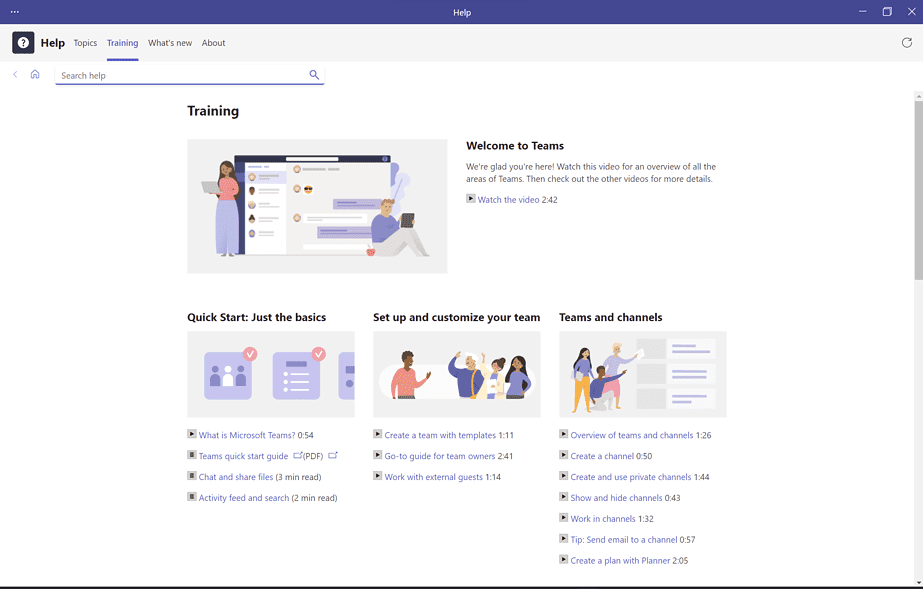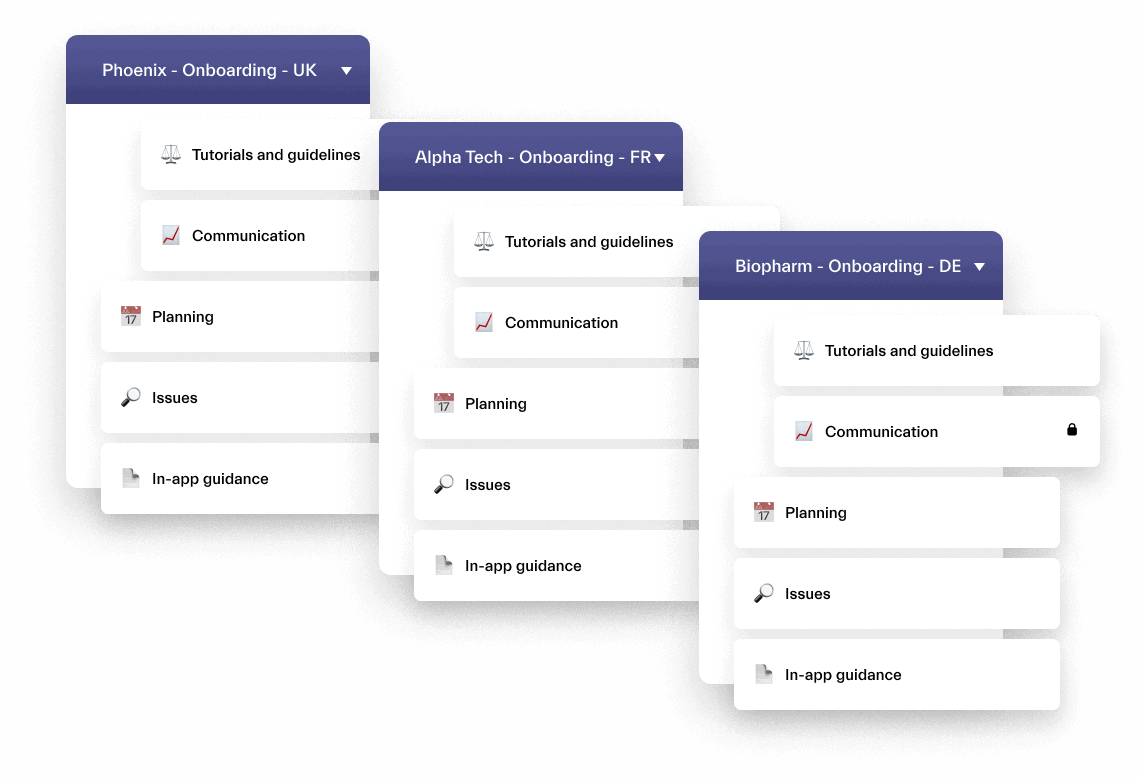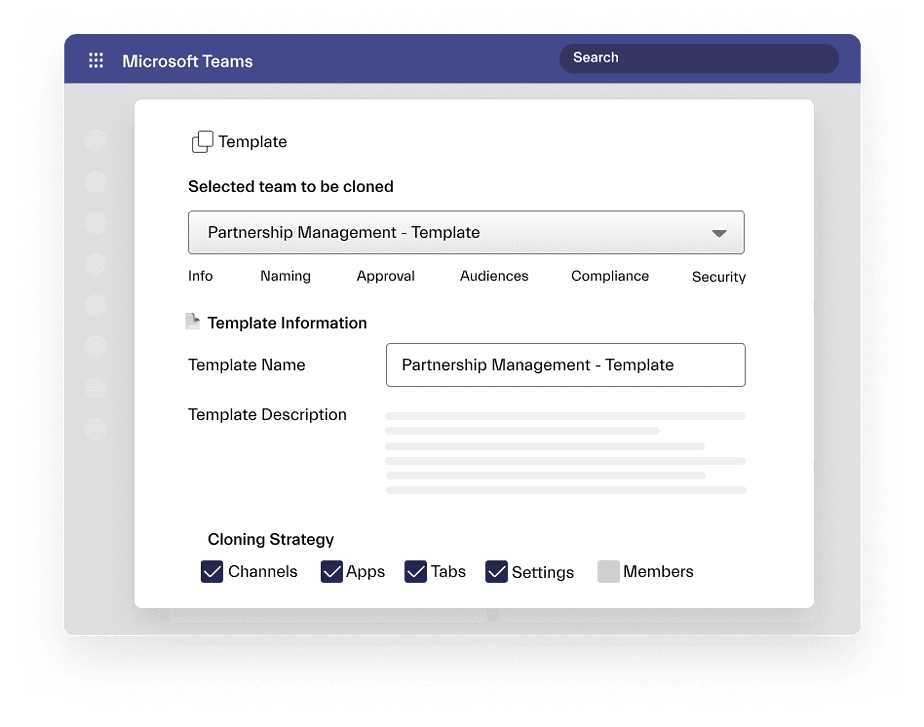Microsoft Teams has become a widely adopted platform for team collaboration and communication in the workplace. However, it’s always easy for everyone to use. There are several common challenges that organizations may face during Microsoft Teams adoption, and in this article, we’ll explore these challenges and discuss practical solutions to overcome them.
We’ve also created a series of articles on Microsoft Teams adoption strategy if you’d like to dig deeper into the topic.
Challenge 1: Resistance to Microsoft Teams adoption from employees
One of the biggest challenges that businesses face when implementing new technology is employee resistance to change. Employees may be comfortable with their current tools and processes and may not see the need for a new platform. They may also feel overwhelmed by the new technology and unsure how to use it.

Solution: Include employees in the decision-making
To overcome this challenge, it’s important to involve employees in the adoption process from the start and gather their feedback to make sure their concerns are being addressed. You can create a change management plan that includes communication and training for employees, which can help them understand the benefits of using Microsoft Teams and feel more comfortable with the tool.
Here are some steps you can take:
1. Communicate the benefits of Microsoft Teams adoption
Explain how the platform can help them to work more efficiently and effectively. Provide examples of how other businesses have successfully adopted Teams. For example, you could hold a company-wide meeting to introduce Microsoft Teams and explain how it can help improve communication and collaboration within teams.
2. Provide training and education
You could also provide training sessions or workshops as well as online tutorials and webinars to help employees learn how to use the tool effectively.
3. Involve employees in the decision-making process
Involve employees in the decision-making process when choosing Microsoft Teams as the collaboration tool. This can include a survey or focus group to gather feedback and input.
By involving employees in the adoption process, organizations can create a sense of ownership and engagement, which can lead to greater adoption and success.
Challenge 2: Difficulty in navigating Microsoft Teams
Microsoft Teams has many features and capabilities, which can be overwhelming for new users who are not familiar with the platform. This can lead to frustration and a lack of adoption from the team members who’d want to stick to other familiar tools.

Solution: Start small and focus on key Microsoft Teams features
1. Create a user guide
Create a user guide that provides step-by-step instructions on how to use Microsoft Teams. This guide should be accessible to all employees and regularly updated as new features are added. It can be in a form of video tutorials or written instructions.
2. Start with the basics
Start by introducing employees to the basic features of Microsoft Teams, such as chat, video calls, and file sharing. Once they are comfortable with these features, introduce more advanced features.

3. Use the Help Center
Microsoft Teams has a built-in Help Center that provides access to articles, tutorials, and other helpful resources to help users understand how to make the most of the platform.
4. Offer one-on-one training
Offer one-on-one training sessions with employees who are struggling to navigate the platform. This can be done virtually or in-person.
5. Simplify the user experience
Customize the Microsoft Teams user interface to remove unnecessary features and functions. This will make it easier for employees to navigate and use the platform effectively. You may also want to provide them with Microsoft Teams templates by nBold that they can use to create pre-built teams with the channel structure, files and folders, apps, and governance rules.
6. Provide ongoing support
Provide ongoing support to employees as they navigate the platform. This can include a dedicated help desk, chat support, or a Microsoft Teams champion within the organization who can answer questions and provide guidance.
Challenge 3: Lack of engagement in Microsoft Teams
Despite the many benefits of Teams, some team members may resist using it or may not fully engage with the platform, leading to low adoption rates and missed opportunities for collaboration and productivity. This can happen for various reasons – from lack of understanding of the platform and preference of other tools to lack of relevance and therefore interest.

Solution: Encourage active participation in Microsoft Teams
Here are some ideas on how you can solve the challenge of lack of engagement from the very start of Microsoft Teams adoption
1. Customize Teams for specific roles
Customize Teams to meet the specific needs of each team and role within the organization. For example, set up channels for specific projects or departments and provide training on how to use Teams to accomplish specific tasks.
2. Lead by example
Leaders and managers should lead by example and use Microsoft Teams to collaborate and communicate with their team members. This can demonstrate the value of the platform and encourage others to use it.
3. Encourage participation
Encourage employees to actively participate on the platform by setting goals and expectations for usage. For example, businesses can suggest for the employees to create channel posts for each important update or completed task.
Additionally, it’s a good idea to encourage team members to use Teams as their primary communication tool, rather than relying on email or other tools.
You could create a rewards program that incentivizes team members to use Microsoft Teams for communication and collaboration.
4. Create a sense of community
You can do so by encouraging employees to share personal updates, celebrate achievements, and engage in informal conversations. This can help to build relationships and foster a sense of belonging among team members.
For example, a business can create a channel on Microsoft Teams dedicated to sharing personal updates or have a monthly virtual coffee break where team members can catch up and connect informally.
Challenge 4: Lack of knowledge on how to use Microsoft Teams effectively
That’s one of the most common challenges in Microsoft Teams adoption. Many team members may be unfamiliar with the platform’s features and capabilities, leading to frustration and confusion when trying to use the platform. That can happen due to lack of training or difficulty accessing training resources. Some team members may not have had the opportunity to use Teams, either because they are new to the organization or because they work remotely.

Solution: Provide the team with the knowledge and training
Here are a few ways to do that:
1. Provide training and education
This can take on many forms: online tutorials, webinars, or in-person training sessions. For example, a business can create a series of onboarding sessions for new employees that include training on how to use Microsoft Teams. Additionally, businesses can offer ongoing training and support through regular webinars or Q&A sessions.
2. Create a knowledge base
You may want to create a resource library that team members can refer to when they have questions or need help using Teams.
3. Assign Teams champions
Assign Teams champions within each team or department who can serve as a resource for other team members and help answer questions about how to use Teams effectively.
Challenge 5: Difficulty in integrating Microsoft Teams with other tools and platforms
Many organizations use multiple tools and platforms for different aspects of their work, which can make it challenging to integrate Microsoft Teams seamlessly with these existing tools and workflows. For example, if an organization is already using a project management tool or a CRM system, they may need to find a way to connect them to Microsoft Teams to centralize all information and ensure better cross-team alignment.
→Download: Microsoft Teams & Salesforce Integration Guide

Solution: Use third-party integrations and customizations
Organizations will have to prioritize integration and take steps to ensure that Microsoft Teams can work seamlessly with their existing tools and platforms. Here is how:
1. Identify integration needs
Identify the integration needs of the organization and prioritize the integration of tools that are most critical for collaboration and communication.
2. Explore available integrations
Microsoft Teams integrates with a variety of third-party tools and platforms, such as Trello, Asana, Salesforce, and more. You may want to explore the available integrations and connectors that Microsoft Teams offers.
3. Use Zapier or Power Automate
These integration tools that can help connect Microsoft Teams with other platforms and build flows. Both Zapier and Power Automate have pre-built templates that make it easier to set up integrations and automate workflows between different applications.
4. Use third-party tools
You can use a third-party tool such as nBold that can help you streamline the integration process. For example, if you use a CRM or a project management tool you can integrate it with Microsoft Teams through Collaboration Templates to trigger creation of new teams and channels, conversations, tabs as well as team archiving. This can help to streamline workflows and improve communication between teams.
See how nBold CRM works with Salesforce ↓
Challenge 6: Difficulty in managing and organizing team content
With teams collaborating on different projects, there is often a lot of content generated on Microsoft Teams, such as chat messages, files, and documents. This can lead to information overload, making it difficult for team members to find relevant information when they need it. Moreover, different team members might have different approaches to organizing their files and documents, leading to inconsistencies and confusion.

Solution: Develop a content management strategy
To address this challenge, organizations should establish clear guidelines and best practices for managing and organizing team content within Microsoft Teams. Here are some possible solutions:
1. Establish Standard Operating Procedures (SOPs)
Create a set of standard procedures for organizing team content, including naming conventions and folder structures. This will help ensure that all team members follow a consistent approach, making it easier to find content.
2. Use tags and keywords
Encourage team members to tag files and documents with relevant keywords to make them easier to find. This can be especially useful when searching for content across multiple channels and teams.
3. Use channels and folders
Organize content by creating channels and folders within Microsoft Teams. This will help group related content and make it easier to find.
4. Use Microsoft Teams templates
Microsoft Teams templates can help you control and standardize team creation making sure all new teams follow the same structure. With Microsoft Teams templates by nBold you can also make sure all the content added at the template level will be copied to new teams: that includes files, folders and tabs with apps. By doing so, you will ensure consistency and structure of your teams at scale.

5. Train your teams
Provide training to team members on how to use Microsoft Teams effectively, including how to organize and manage team content. This will help ensure that all team members are on the same page and following the same procedures.
Challenge 7: Lack of governance and control over Microsoft Teams usage
One of the common challenges faced by organizations using Microsoft Teams is the lack of governance and control over its usage. If there’s no control of team creation in place, in no time you can end up with dozens and hundreds of teams that don’t serve a collaboration process, leading to Teams sprawl. Additionally, Teams allows external users to be added to a team or channel using guest access. While this can be useful for collaboration with external partners or clients, it can also lead to data leakage if not monitored carefully.
Moreover, without proper data retention and deletion policies in place, you may struggle with information overload, legal and compliance issues, and potential security risks.
Solution: Establish clear governance policies and procedures
Organizations must prioritize governance and invest in tools that can help to enforce policies and ensure that the platform is being used in a way that’s aligned with the organization’s goals.
1. Develop governance policies
Develop a clear set of governance policies that outline how Microsoft Teams should be used within the organization. This can include guidelines on who can create Teams and channels, how content should be shared, and what types of content are allowed.
2. Communicate policies to employees
Once governance policies have been established, communicate them clearly to all employees. This can include creating a training program, holding a company-wide meeting, or distributing a handbook.
3. Enforce policies
Enforce governance policies by setting up automated controls and alerts to flag potential violations. This can include setting up retention policies, data loss prevention policies, and access controls. You may also use 3rd party solutions that will help you enforce governance policies without affecting end-users. With nBold you can set up naming rules, approvals for team creation, audiences for specific templates, membership policies, sensitivity labels, enforced privacy, lifecycle management and more.

4. Monitor usage
Regularly monitor usage of Microsoft Teams to ensure that governance policies are being followed. This can include reviewing activity logs, conducting audits, or using third-party tools to analyze usage patterns.
By following these steps, organizations can better manage and control their Microsoft Teams environment, reducing security and compliance risks and improving overall productivity.
Challenge 8: Difficulty in tracking and measuring success of Microsoft Teams adoption
It can be difficult to determine whether Teams is actually improving collaboration and productivity within the organization. Microsoft Teams does not provide a built-in way to measure success or track key metrics, such as team productivity, user adoption, or collaboration effectiveness.

Solution: Identify and track key metrics
To address this challenge, you will need to establish clear metrics and KPIs that align with their specific goals and objectives.
1. Define success metrics
Define a clear set of metrics and KPIs that align with the business’s overall goals and objectives. This can include measuring usage rates, response times, and the number of active Teams and channels, and the number of messages or files shared.
2. Set up reporting and analytics
Set up reporting and analytics tools to track and measure progress against these metrics and KPIs. This can include using Microsoft’s built-in reporting tools or third-party analytics platforms.
3. Conduct user surveys
You can also conduct user surveys to gather feedback on their Microsoft Teams experience and identify areas for improvement. This feedback can help organizations refine their success metrics and measure progress over time.
4. Improve
You should use the insights gained from tracking and measuring success to drive continuous improvement. This can involve identifying best practices, providing additional training and education, and optimizing processes to improve overall productivity and collaboration.
The adoption of Microsoft Teams can bring significant benefits to organizations, but it also comes with its own set of challenges. From difficulty in adoption and integration to tracking and measuring success, these challenges can impact user productivity and the overall success of the project. However, by following the steps we’ve shared you can overcome these challenges and ensure a successful adoption of Microsoft Teams. With the right approach and tools, you can fully leverage the power of Microsoft Teams to improve collaboration, communication, and productivity.

